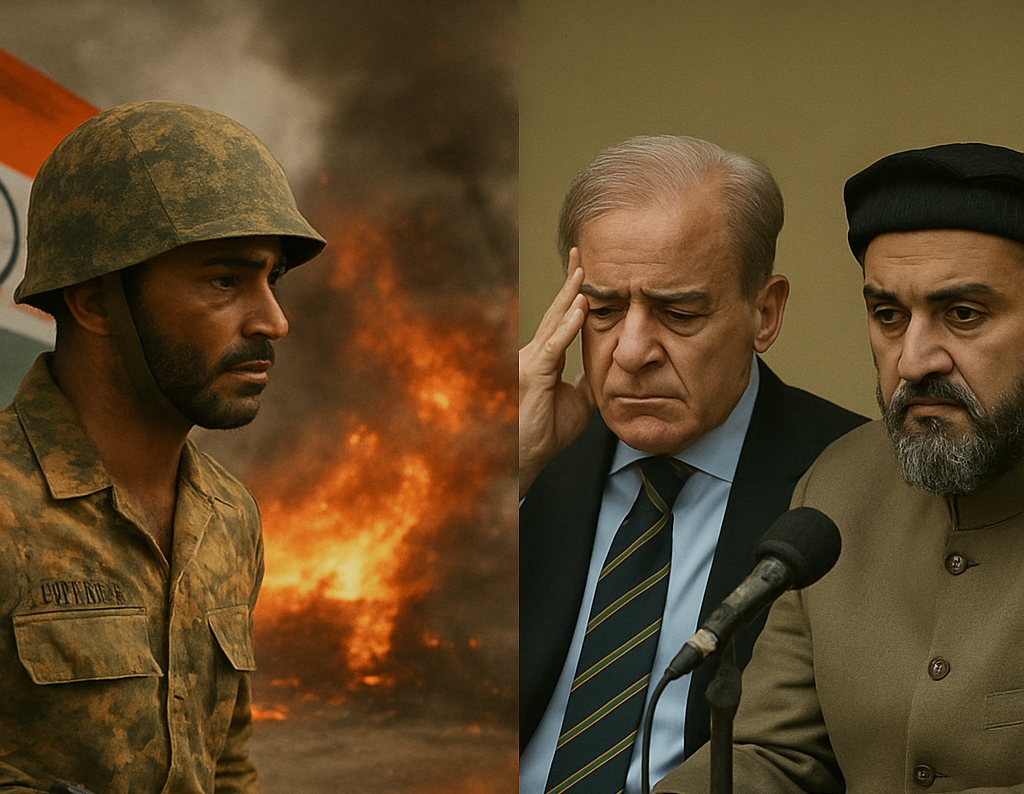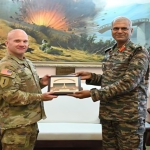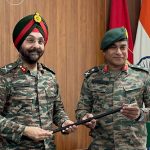In May 2025, South Asia was jolted by a sudden and intense military confrontation between India and Pakistan. The spark: a brutal militant attack in Kashmir that left 26 civilians dead, most of them Hindu tourists. Within just 72 hours of escalating hostilities, Pakistan unexpectedly called for a ceasefire. What triggered such a swift reversal? This article unpacks the rapid chain of events, the decisive Indian response, Pakistan’s internal and external pressures, and the broader implications for the region.
Background of the Conflict
The immediate trigger came on April 22, 2025, when militants attacked a tourist convoy in Pahalgam, Jammu and Kashmir. India swiftly blamed Pakistan-based groups such as Jaish-e-Mohammed and Lashkar-e-Taiba. Despite Pakistan’s denials, India launched Operation Sindoor on May 7—a bold cross-border offensive targeting terror infrastructure not only in Pakistan-occupied Kashmir but deep within Pakistani territory, including Bahawalpur and Punjab.
The escalation was rapid and wide-ranging. Pakistan responded with Operation Bunyan-un-Marsoos, targeting Indian military assets. For the first time in their history, the two nations engaged in a drone battle, while missile strikes, border skirmishes, and cyber operations unfolded almost simultaneously.
India’s Swift and Decisive Response: Operation Sindoor
Operation Sindoor was India’s most coordinated and high-impact military response since the Kargil War. Sources within the Indian defence establishment confirmed that the operation was designed to send a clear and unambiguous message: India has both the intent and the capability to execute precise conventional strikes deep inside Pakistan.
The operation unfolded in two distinct phases:
Phase 1: Pinpoint Strikes on Terror Camps (May 7)
Initial strikes focused on nine terrorist camps across Pakistan and Pakistan-occupied Kashmir (PoK), leading to significant destruction of terror infrastructure. These were coordinated operations between the Indian Air Force (IAF) and Indian Army, using Crystal Maze missiles, which provided real-time footage of successful hits. High-resolution UAVs and satellite imagery were employed to ensure verifiable damage assessments.
Phase 2: Strategic Saturation and Escalation Dominance (May 8–9)
From May 8, India escalated the operation using a broad spectrum of precision air-to-ground missiles, including BrahMos, SCALP, Hammer, Rampage, and Spice 2000. Loitering munitions like Harpy and Harop played a crucial role in disabling Chinese-supplied HQ-9B and HQ-16 air defence systems in Pakistan.
India’s use of electronic warfare and jamming allowed its munitions to evade Pakistani air defences and strike key strategic sites. Strikes were confirmed on PAF installations in Chaklala, Nur Khan Airbase (Rawalpindi), Bholari, Rafiqui, Rahim Yar Khan, Sargodha, Jacobabad, and Bhulari. Unconfirmed reports indicated the destruction of a Saab Erieye AEW&C aircraft at Bholari. Pakistan acknowledged five casualties at the base.
Also Read: India Becomes The First Country to Strike 11 Air Bases of a Nuclear Powered Country
Indian officials claimed all IAF pilots returned safely. Multiple Pakistani aircraft were reportedly downed in the engagement.
The Psychological and Technological Edge
India’s operational backbone included the S-400 Triumf air defence systems, indigenous Akash missiles, and the Barak 8 (Medium-Range Surface-to-Air Missile, or MRSAM) systems, which together formed an integrated and layered air defence shield.
Also Read: Complete List of India’s Air Defence Systems as of 2025
These systems formed a layered defensive shield that worked in coordination with offensive operations, allowing India to maintain air dominance and protect its own skies from retaliatory Pakistani strikes.
Also Read: What is Integrated Air Command & Control System (IACCS) ? Did It Integrate with Army’s Akashteer in Operation Sindoor? and What is Akashteer Air Defence System?
Despite Pakistan’s early threats of “massive retaliation,” its response shifted to disinformation tactics. Doctored satellite images and exaggerated damage claims were quickly debunked by international analysts. In contrast, India adopted a measured and transparent approach, releasing only verified footage to avoid the post-Balakot controversies.
The strategic shock inflicted by the strikes was significant enough that around 2:30 a.m. on May 10, Pakistan’s Army Chief General Syed Asim Munir reportedly called Prime Minister Shahbaz Sharif to inform him of confirmed Indian ballistic missile strikes on key PAF airbases.
By the early morning of May 10, just three days after rejecting Indian calls for talks, Pakistan’s Director General of Military Operations (DGMO) reached out urgently to his Indian counterpart, seeking a ceasefire.
Pakistan’s Vulnerabilities Exposed
Several vulnerabilities contributed to Pakistan’s rapid call for a ceasefire:
Military Shock
India’s precision strikes under Operation Sindoor inflicted critical damage on key Pakistani military installations, particularly strategic airbases such as Nur Khan (Rawalpindi) and Bholari, reportedly destroying high-value assets like a Saab Erieye AEW&C aircraft. The campaign overwhelmed Pakistan’s air defence grid, including Chinese-supplied HQ-9B and HQ-16 systems, through electronic warfare, jamming, and loitering munitions (Harpy/Harop). These operations crippled Pakistan’s command-and-control infrastructure, disrupted the Pakistan Air Force’s (PAF) ability to launch coordinated responses, and eroded morale within the ranks. India’s demonstrated escalation dominance—showing it could strike deeper and more precisely—sent a strategic shock through Pakistan’s military leadership, which had not anticipated such swift, integrated, and overwhelming retaliation.
Economic Crisis
Pakistan was already reeling from a deep economic downturn prior to the conflict. The country faced external debt exceeding $130 billion, much of it owed to China and international lenders. Inflation was soaring, with food and fuel prices hitting record highs, severely affecting public sentiment and consumption. Foreign exchange reserves were critically low—barely enough to cover a few weeks of imports—leaving the economy highly vulnerable.
Meanwhile, negotiations with the IMF remained stalled, with conditional aid packages dependent on political stability and fiscal reforms. In this fragile state, a full-scale or prolonged military conflict would have only exacerbated the crisis, triggering a collapse in investor confidence, steep currency devaluation, and potential international sanctions. Pakistan’s economy simply lacked the buffer to sustain even a limited conventional war.
Political Unrest
Internally, Pakistan was facing widespread political turbulence. Mass protests and opposition movements were targeting the Sharif government over its handling of governance and the deteriorating economy. Civil-military tensions were also rising, with the military facing criticism for overreach and perceived operational failures. Simultaneously, ongoing insurgencies in Balochistan and Khyber Pakhtunkhwa continued to challenge state authority, as separatist and militant groups maintained their campaigns against the central government. Law and order were breaking down in several areas, marked by strikes, political arrests, and crackdowns on dissent. These internal fault lines made it extremely difficult to mobilize national unity or public support for any military escalation. The leadership feared that prolonging the conflict could trigger a wider domestic backlash, further weakening the state’s already tenuous grip over volatile regions.
Diplomatic Isolation
Unlike previous India–Pakistan confrontations, Islamabad found itself increasingly isolated on the diplomatic front. China, while issuing routine statements of concern, refrained from offering tangible support or military backing, prioritizing its own economic interests and regional image and advising restraint. Gulf countries, particularly the UAE and Saudi Arabia, avoided openly siding with Pakistan, instead issuing bland calls for de-escalation, influenced by their growing economic and strategic ties with India. The broader international community—including major Western powers and traditional allies like Turkey—viewed India’s response as limited, targeted, and justifiable given the context of ongoing cross-border terrorism. With little diplomatic cover or leverage to sustain a prolonged military engagement, Pakistan’s leadership chose to seek a ceasefire before their already weakened position deteriorated further.
International Reaction and Diplomatic Dynamics
Global powers, including the United States, the European Union, and Gulf countries, quickly mobilized diplomatic efforts to contain the escalating conflict between India and Pakistan. Recognizing the risks of a wider regional war, the United Nations Secretary-General issued a strong call for immediate de-escalation and peaceful dialogue. This unified international pressure underscored the global community’s interest in stability in South Asia.
The U.S. President’s statement on May 10 was particularly notable for its nuanced tone. While firmly urging both India and Pakistan to cease hostilities, the statement subtly acknowledged India’s right to defend itself and respond to cross-border terrorism. This carefully balanced approach signaled tacit support for India’s calibrated military actions while encouraging restraint and diplomacy.
India’s strategic messaging throughout the crisis was highly effective. By transparently releasing verified evidence of precision strikes targeting terrorist camps and military infrastructure—not civilian areas—India positioned itself as a responsible actor committed to limiting collateral damage. This contrasted sharply with Pakistan’s attempts to portray itself as a victim through disinformation and exaggerated claims, which failed to resonate internationally.
As a result, the global narrative largely viewed India’s response as justified and measured, emphasizing India’s commitment to combating terrorism without escalating to indiscriminate violence. This enhanced India’s diplomatic standing and helped isolate Pakistan, which struggled to gain international sympathy or support for its position.
Ceasefire and Immediate Aftermath
The ceasefire agreement reached on the evening of May 10 marked a critical pause in active hostilities between India and Pakistan, but it did not signal a full resolution or lasting peace. Within hours of the truce, reports emerged of Pakistani forces violating the ceasefire through cross-border firing along the Line of Control and renewed drone incursions into Indian airspace. These violations underscored the reality that Pakistan’s acceptance of the ceasefire was primarily a tactical retreat aimed at regaining strategic breathing room rather than a genuine diplomatic breakthrough.
Despite these violations, India’s key objectives in Operation Sindoor had already been accomplished. The operation’s strategic goals — degrading terrorist infrastructure, demonstrating precision strike capability, and signaling deterrence through escalated military dominance — were clearly met. Indian military leadership, exemplified by Air Marshal A.K. Bharti’s candid assessment, expressed strong confidence in the success of the operation. His statement, “Did we achieve our military objective? A thumping yes,” reflected not only the operational achievements but also the psychological and strategic impact India had imposed on Pakistan.
In essence, while the ceasefire did not end all conflict immediately, it represented a pause initiated on Pakistan’s terms after India’s decisive military campaign had tilted the balance. The aftermath highlighted India’s strengthened posture, the erosion of Pakistan’s offensive capabilities, and set the stage for renewed diplomatic and strategic calculations in the region.
Why Did Pakistan Plead for a Ceasefire in Just 72 Hours?
Pakistan’s urgent plea for a ceasefire within just three days of India’s Operation Sindoor was not a spontaneous decision but the result of multiple interlinked factors that forced Islamabad into a corner.
India’s Precision Offensive Doctrine
Operation Sindoor showcased India’s evolved military doctrine focused on precision strikes, technological superiority, and controlled escalation. The campaign employed advanced missile systems, loitering munitions, and real-time intelligence to target critical terror infrastructure and military assets deep inside Pakistani territory with surgical accuracy. This minimized collateral damage while maximizing operational impact, sending a clear message that India could impose severe costs swiftly without triggering uncontrolled escalation. The ability to degrade Pakistan’s key airbases and air defence systems crippled their immediate response capability, making sustained military resistance untenable.
Pakistan’s Military and Economic Weaknesses
Pakistan entered the conflict with several vulnerabilities. Militarily, its air defence networks and command structures were compromised by India’s strikes, and the loss of vital installations exposed gaps in readiness. Economically, Pakistan was already facing a severe crisis—ballooning external debt, soaring inflation, critically low foreign exchange reserves, and stalled IMF negotiations left it with little financial resilience to withstand the costs of war. These constraints severely limited Pakistan’s ability to sustain prolonged military operations or absorb the shocks from India’s strikes.
Global Diplomatic Pressure
Unlike past confrontations where Pakistan could count on stronger international backing, this time the diplomatic environment was markedly different. Major global powers, including the U.S., the EU, and Gulf states, pushed for restraint and de-escalation. China’s response was muted and cautious, with no tangible support extended beyond diplomatic statements. The international community largely viewed India’s retaliation as justified and proportionate, isolating Pakistan diplomatically and cutting off avenues for leverage or intervention. This left Pakistan diplomatically exposed and under pressure to seek a quick resolution.
Fear of Escalation Beyond Conventional Warfare
Operation Sindoor demonstrated India’s capability to conduct calibrated strikes with escalation dominance while carefully avoiding nuclear thresholds. Pakistan’s leadership was acutely aware that continued conflict risked spiraling into uncontrollable escalation, potentially triggering broader regional instability or nuclear confrontation. This fear, combined with the military setbacks and economic fragility, made prolonging the war a gamble Pakistan could not afford. The leadership chose to seek a ceasefire as a strategic move to contain damage and reassess its position.
Operation Sindoor did not just represent a military operation; it signaled a paradigm shift in India’s strategic approach—swift, technologically sophisticated, and deliberately escalatory, yet controlled to avoid crossing the nuclear threshold. This new doctrine effectively neutralized Pakistan’s capacity and will to sustain conflict, forcing it to plead for a ceasefire within 72 hours.
Strategic Implications
Operation Sindoor not only showcased India’s military prowess but also triggered far-reaching consequences that will shape the regional security landscape and global perceptions for years to come.
India’s Deterrence Strengthened
Operation Sindoor significantly enhanced India’s deterrence posture by proving its capability and willingness to conduct rapid, precision-based military operations deep inside adversary territory. This operation demonstrated that India can respond decisively to cross-border terrorism without causing indiscriminate damage, thereby raising the costs for any future provocations. The success of the campaign reassured both domestic and international audiences that India possesses a credible conventional strike capability coupled with advanced technology and robust command-and-control mechanisms. This development strengthens India’s strategic messaging, making potential aggressors think twice before initiating hostile acts.
Pakistan’s Strategic Setback
The rapidity and scale of the Indian strikes exposed fundamental weaknesses in Pakistan’s military preparedness and strategic depth. The neutralization of critical airbases, air defence systems, and terror infrastructure revealed gaps in Pakistan’s defensive architecture and its inability to protect vital military assets against modern, technologically superior attacks. Moreover, Pakistan’s limited economic capacity and diplomatic isolation compounded these military challenges, undermining its overall strategic standing in the region. This setback weakens Pakistan’s deterrence credibility and may force it to rethink its military doctrine and internal security strategies moving forward.
Regional Volatility Continues
Despite India’s operational success, the underlying issues fueling India-Pakistan hostility remain unresolved. Cross-border terrorism, disputed territories, and ideological conflicts continue to fuel mistrust and tension. While Operation Sindoor temporarily imposed costs on Pakistan, it did not address these root causes, meaning that the risk of future flare-ups persists. Both nations remain locked in a fragile equilibrium where minor incidents could escalate rapidly, requiring sustained diplomatic and strategic efforts to manage conflict and build long-term stability.
Global Realignment
The international response to Operation Sindoor signals a shift in global perceptions of India’s military capabilities and strategic role. Nations now recognize India as a power capable of executing high-impact, proportionate military responses within a controlled escalation framework. This enhances India’s stature as a responsible regional actor that balances assertiveness with restraint. The perceived reliability and sophistication of India’s military operations encourage stronger strategic partnerships and may influence global diplomatic alignments, particularly as India emerges as a key player in maintaining Indo-Pacific and South Asian stability.
Conclusion
The events of 7–10 May 2025 fundamentally reshaped the strategic dynamics of South Asia. Pakistan’s rapid plea for a ceasefire within just 72 hours underscored the overwhelming scale, precision, and effectiveness of Operation Sindoor. This campaign was not merely a display of military strength but a sophisticated blend of cutting-edge technology, coordinated conventional strikes, and carefully calibrated escalation—all executed with diplomatic awareness to maintain regional stability. While active combat ceased, the psychological and strategic impact of the operation continues to influence Islamabad’s military planning and risk assessment.
The message was clear: India now possesses the capability and resolve to deliver swift, targeted, and decisive retaliation, raising the stakes for any future cross-border provocations and shifting the regional security calculus in India’s favor.













